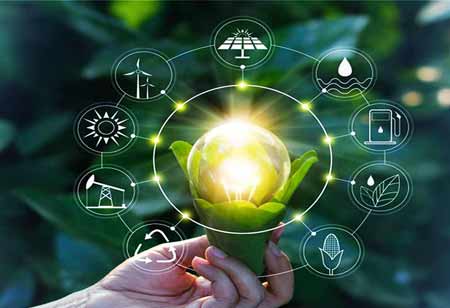Thank you for Subscribing to Energy Business Review Weekly Brief
What are the Top Energy Trends to Watch in 2023

By
Energy Business Review | Friday, December 20, 2024
Stay ahead of the industry with exclusive feature stories on the top companies, expert insights and the latest news delivered straight to your inbox. Subscribe today.
Some of the top energy trends for 2023 are AI in the energy sector, the application of Green hydrogen energy, and the use of advanced engineering in renewables.
FREMONT, CA: Humanity must transition away from fossil fuels in order to slow the damage we are doing to our planet and environment. As we search for sustainable or renewable alternatives to coal, oil, and gas, various science and business innovations have been developed.
It is estimated that the renewable energy market will grow from $880 billion to nearly $2 trillion by 2030. Environmental and social governance (ESG) issues are becoming increasingly important, which means there are tremendous political incentives. In terms of the scale at which the switchover from fossil fuels to renewable sources will take place, 2023 is going to be a record year. In addition, new and exotic sources of energy will emerge from laboratory and pilot projects and begin to become part of our daily lives.
Some of the biggest new Energy trends for the year 2023 are elaborated on below:
The use of Green hydrogen energy: Burning hydrogen produces almost no greenhouse gas emissions in the universe. This makes it a very exciting potential source of energy. As a result, however, converting it into a form that can be used as fuel has traditionally required fossil fuels and created carbon dioxide emissions. As an example, brown hydrogen is derived from coal, while grey hydrogen is derived from natural gas.
By contrast, green carbon is created through electrolysis and water, and generating electricity effectively from renewable sources like wind or solar power makes the process carbon-free. Several major European energy companies committed this year to creating Europe's first major green hydrogen pipeline from offshore wind plants in the North Sea. Despite not being completed until 2035, the European Union has committed to smaller projects that will generate 40GW of renewable power by 2030 for green hydrogen generation.
Renewable energy engineering: Due to the enormous pressure to generate power more economically, efficiently, and safely, renewable energy technology is constantly improving. Further advancements in engineering will be seen in 2023, with more powerful and adaptable photovoltaic panels for solar power generation and turbine blades for hydro and wind power generation. In the US startup, Helicoid's turbine blades, for example, structural fibers are arranged in novel ways to create blades that are stronger, more resistant to environmental erosion, and less prone to fatigue. As a result, they are less likely to be affected by downtime and require fewer repairs and replacements.






